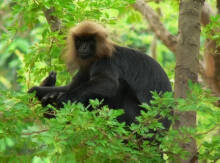
Trachypithecus johnii
Trachypithecus johnii,Nilgiri Langur,Nilgiri black langur, Indian hooded langur, John's langur, Hooded langur, Black langur
Indian black leaf monkey (scientific name: Trachypithecus johnii) foreign na···
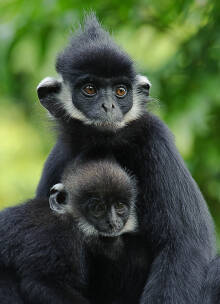
Trachypithecus hatinhensis
Trachypithecus hatinhensis,Hatinh Langur,Ha Tinh black leaf monkey
The Vietnamese black leaf monkey (scientific name: Trachypithecus hatinhensi···
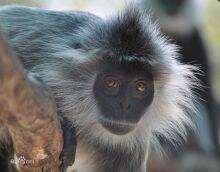
Trachypithecus germaini
Trachypithecus germaini,Indochinese Lutung,Germanic langur, Indonesian langur
Indochinese black leaf monkey (scientific name: Trachypithecus germaini) for···
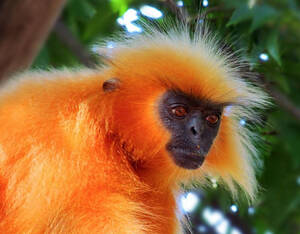
Trachypithecus geei
Trachypithecus geei,Gee’s Golden Langur,Yellow-crowned langur, golden langur, golden long-tailed monkey
Golden Langur (scientific name: Trachypithecus geei) is also known as Gee’s···
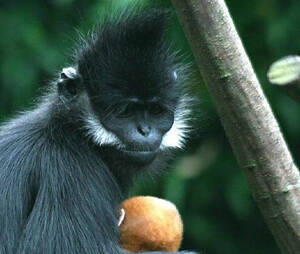
Trachypithecus delacouri
Trachypithecus delacouri,Delacour’s langur,De's black leaf monkey
Delacour’s langur (scientific name: Trachypithecus delacouri) is also known···
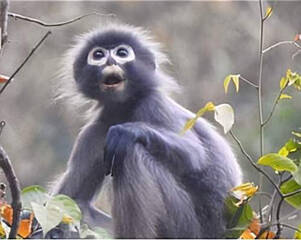
Trachypithecus barbei
Trachypithecus barbei,Tenasserim Lutung
Burmese black leaf monkey (scientific name: Trachypithecus barbei) foreign n···
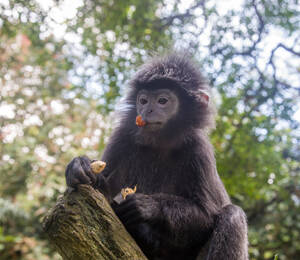
Trachypithecus auratus,
Trachypithecus auratus,Javan Lutung
Javan Lutung (scientific name: Trachypithecus auratus) is called Javan Lutun···
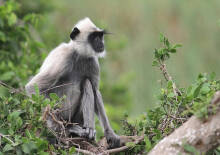
Semnopithecus priam
Semnopithecus priam,Tufted Gray Langur
Tufted Gray Langur (scientific name: Semnopithecus priam) is also known as T···
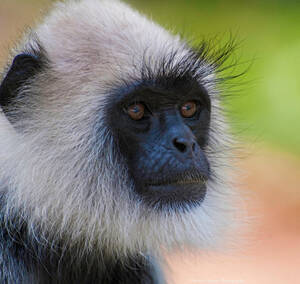
Semnopithecus hector
Semnopithecus hector,Tarai Gray Langur,Talai gray langur, Tarai gray langur, lesser mountain langur, gray langur
Hector's Gray Langur (scientific name: Semnopithecus hector), also known···
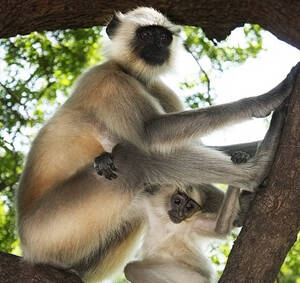
Semnopithecus entellus
Semnopithecus entellus,Northern Plains Gray Langur,Northern Plains Gray Langur, Bengal Long-tailed Langur, Hanuman Langur
Indian Gray Langur (scientific name: Semnopithecus entellus) is called North···
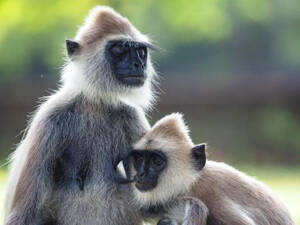
Semnopithecus ajax
Semnopithecus ajax,Kashmir Gray Langur
The specific habits of the Kashmir gray langur (Semnopithecus ajax) are unkn···
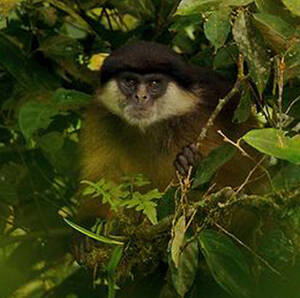
Procolobus verus
Procolobus verus,Olive Colobus,Van Beneden's red colobus, pale green colobus
Olive Colobus (scientific name: Procolobus verus) is the only colobus in the···

Piliocolobus waldronae
Piliocolobus waldronae,Miss Waldron’s Red Colobus,Miss Wattung's Red Colobus Monkey
Waldron’s Red Colobus (Piliocolobus waldronae) has been a subspecies of the···

Piliocolobus tholloni
Piliocolobus tholloni,Tshuapa Red Colobus, Soler's red colobus
The Tshuapa Red Colobus (scientific name: Piliocolobus tholloni) was once a ···
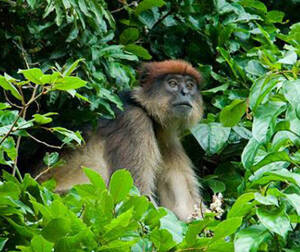
Piliocolobus tephrosceles
Piliocolobus tephrosceles,Uganda Red Colobus,Red colobus monkey Ugandan subspecies
The scientific name of the Ugandan red colobus is Piliocolobus tephrosceles,···
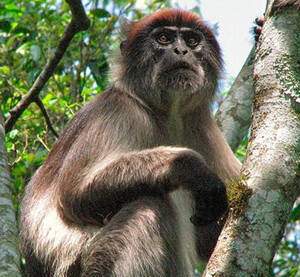
Piliocolobus rufomitratus
Piliocolobus rufomitratus,Eastern Red Colobus,Eastern red colobus, Tana colobus
Tana River Red Colobus (scientific name: Piliocolobus rufomitratus) is calle···
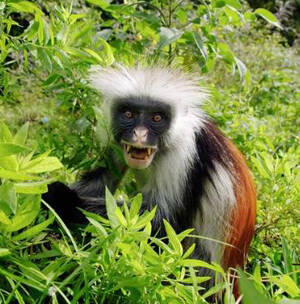
Piliocolobus preussi
Piliocolobus preussi,Preuss’s Red Colobus,Preuss's red colobus
Preuss’s Red Colobus (scientific name: Piliocolobus preussi) is also known ···
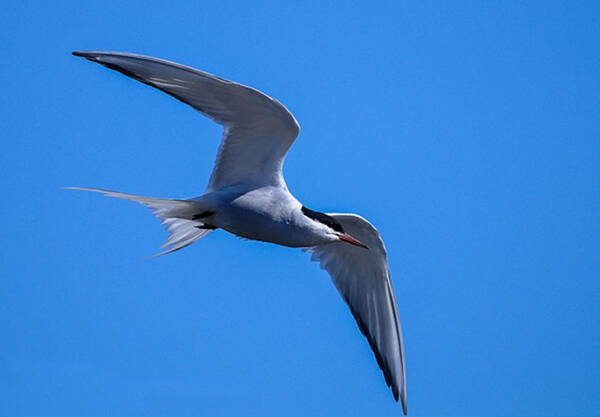
Sterna paradisaea
Arctic Tern ,Sterna paradisaea
The Arctic tern is a seabird belonging to the tern genus. It is medium-sized···
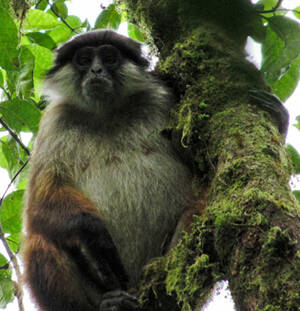
Procolobus pennantii
Procolobus pennantii,Bioko Red Colobus,Oko Red Colobus
Pennant's Red Colobus (scientific name: Procolobus pennantii) is also kn···
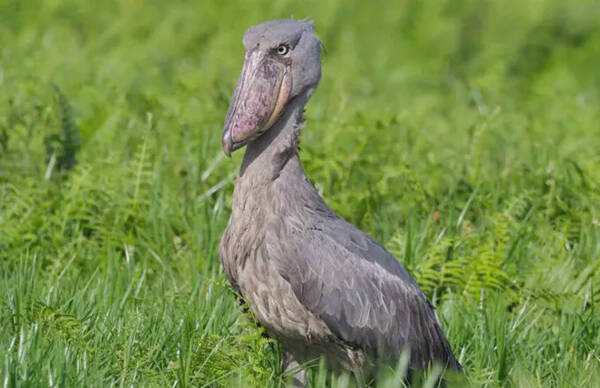
Balaeniceps rex
Balaeniceps rex,Scorpion Stork, Shoe-billed Stork, Zootropod
The largest bird on earth is the Shoebill, the only species in the genus Sho···

Arundinax aedon
Arundinax aedon,Tree warbler, reed warbler, reed warbler, large-billed warbler
Thick-billed reed warbler is a bird of the family Albizia and genus Albizia.···

Acrocephalus scirpaceus
Acrocephalus scirpaceus,Large-billed Warbler
Reed warblers are small in size and often move alone or in pairs. They like ···

Acrocephalus dumetorum
Acrocephalus dumetorum,Reed Warbler
Brandt's reed warbler is a small bird. The male and female have similar ···

Acrocephalus agricola
Acrocephalus agricola,Double-browed reed warbler, willow warbler, reed warbler, round-winged reed warbler
The rice field reed warbler is a small bird with similar plumage for males a···

Acrocephalus tangorum
Acrocephalus tangorum
The Far Eastern Reed Warbler is a medium-sized, dull grey-brown reed warbler···
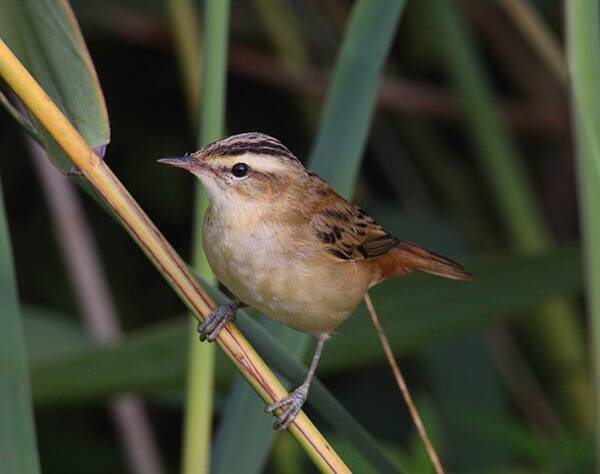
Acrocephalus schoenobaenus
Acrocephalus schoenobaenus,Sedge Warbler
The water reed warbler is a small bird with similar plumage for males and fe···
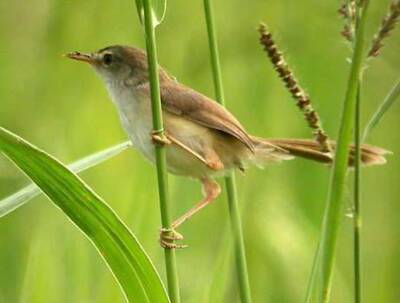
Acrocephalus concinens
Acrocephalus concinens,Blunt-winged Warbler
Blunt-winged reed warbler (scientific name: Acrocephalus concinens) is a bir···
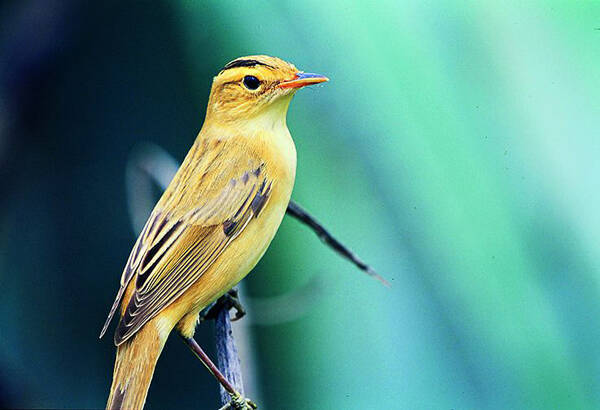
Acrocephalus sorghophilus
Acrocephalus sorghophilus,Spotted Reed Warbler
The Fine-striped Reed Warbler is a summer and migratory bird in my country, ···
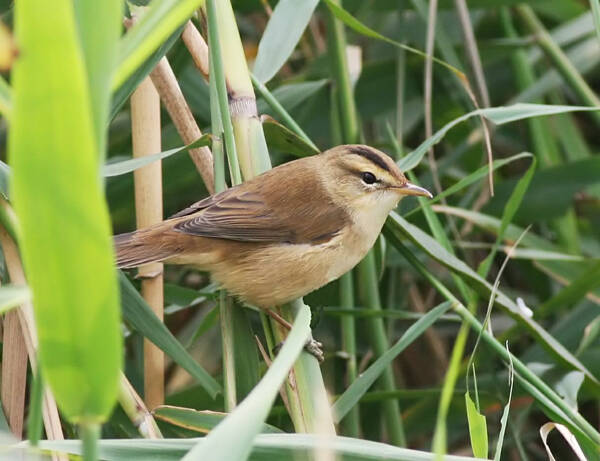
Acrocephalus bistrigiceps
Acrocephalus bistrigiceps,Willow leaves, mouth lashes
The black-browed reed warbler often moves alone or in pairs. It is alert and···
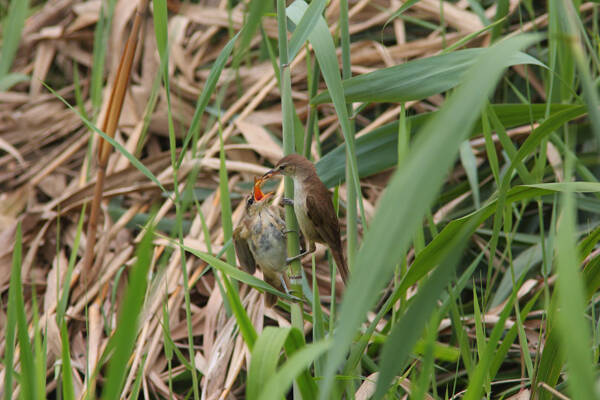
Acrocephalus stentoreus
Acrocephalus stentoreus,Southern Great Reed Warbler
The Noisy Great Reed Warbler is similar to the Great Reed Warbler. It often ···
